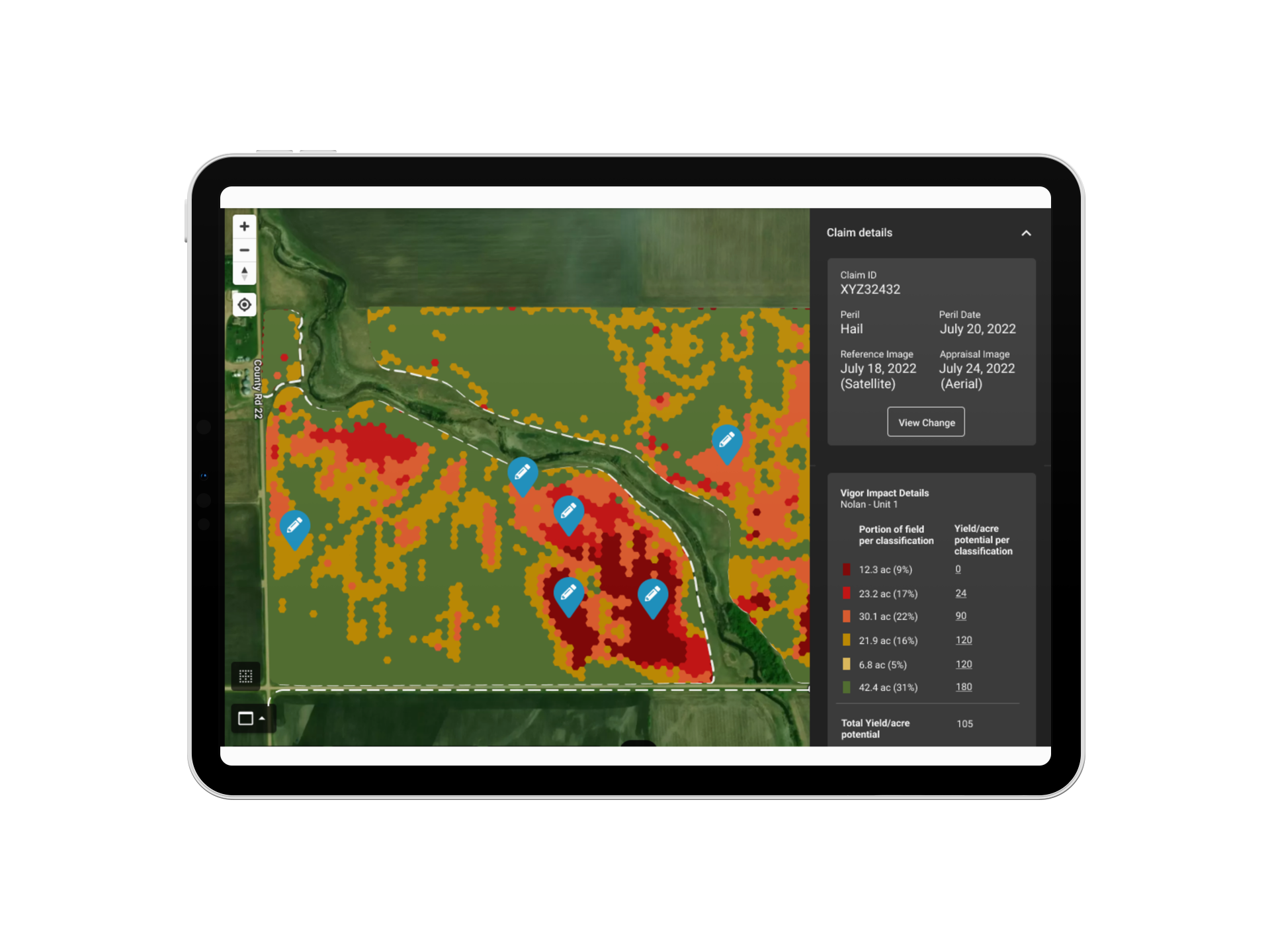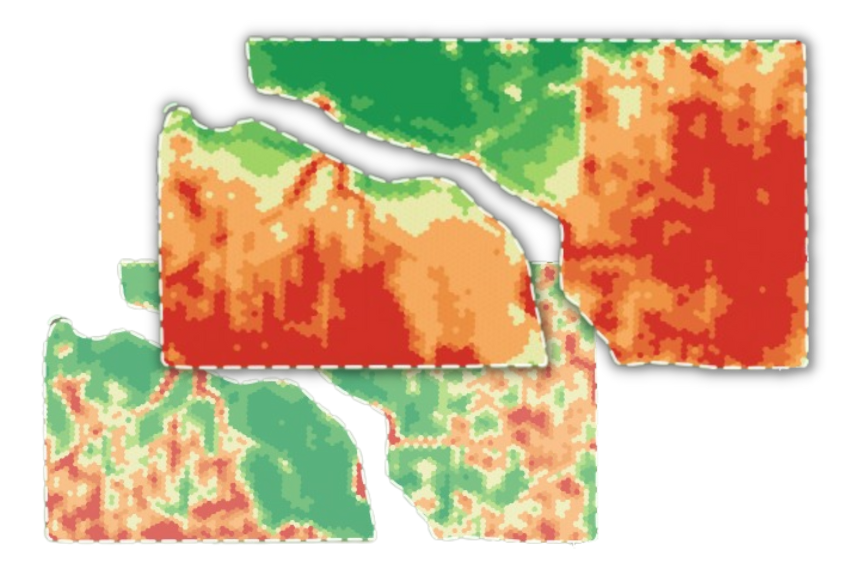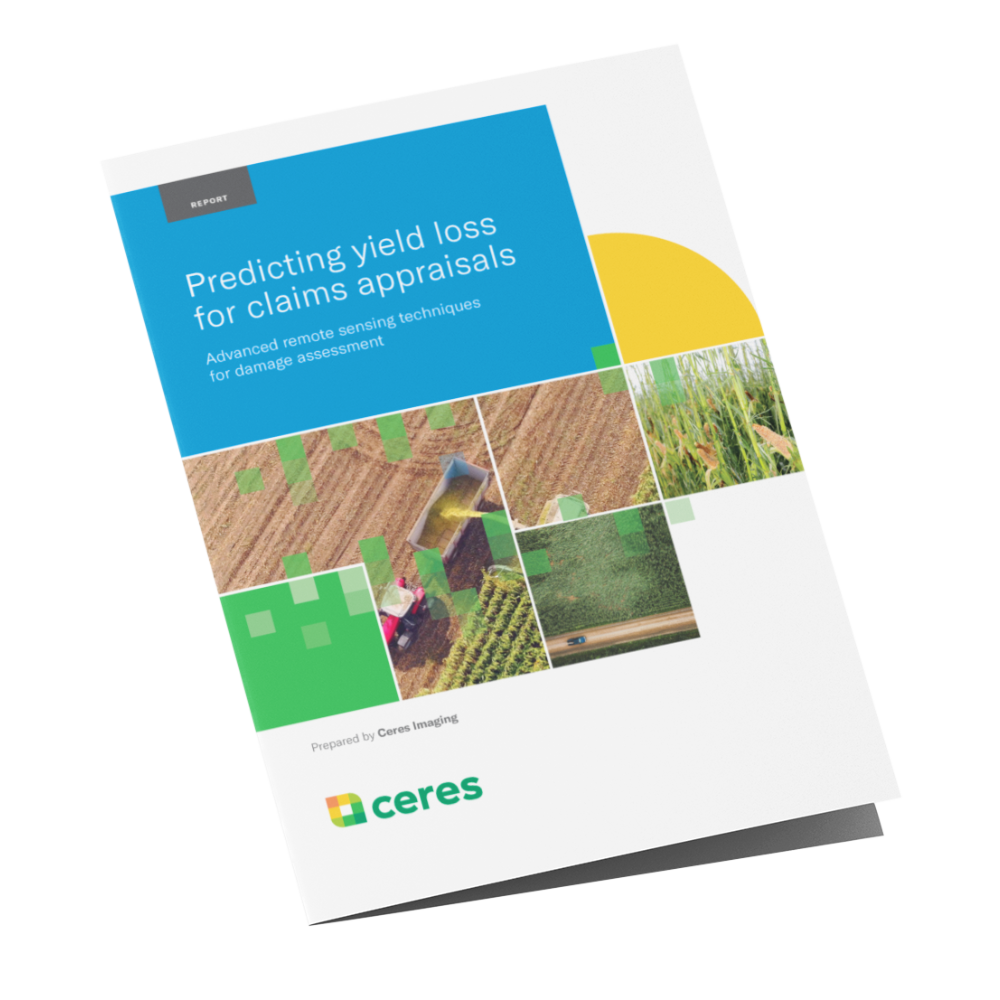Damage reporting
When extreme weather impacts the crop, farmers rely on insurance carriers to respond quickly and fairly in assessing their losses. As climate change increases the frequency and severity of these peril events, insurance carriers must adapt to keep pace. Ceres’ advanced damage reporting offers customizable tools for streamlining the appraisals process, improving accuracy, and strengthening client trust.

Common uses
-
Locating and quantifying areas of crop damage
-
Identifying the most representative field sites for sampling or testing
-
Optimizing crop loss calculations for loss claims
-
Building customer trust with increased transparency in claims processing

How it works
In the aftermath of flooding, hail, windstorms, or other covered peril events, damage to crops can vary widely. Soil variability, agronomic practices, and crop genetics contribute to significant differences in yield outcomes between and even within covered fields. Accounting for this variability while abiding by prescribed loss procedures is a challenge for adjusters in the field, especially where road access is limited or taller crops obscure ground-level views.
Ceres combines remote sensing data from multiple sources–including satellite and high-resolution aerial imagery captured before and after a peril event–to measure and assess crop damage in detail. We provide customizable damage reports that specify the most representative locations for in-field sampling and testing, saving adjustors time in the field while simultaneously enabling a more accurate appraisal. Insured parties benefit, too, with faster processing times and increased visibility into the appraisals process.
Ensuring accuracy
Ceres Imaging’s emphasis on quality begins even before we fly your fields.
Image capture
We capture imagery during peak daylight hours and under weather conditions that minimize distortion from shadows and cloud cover. Our highly sensitive, custom-built cameras detect minute changes in the multispectral range—allowing us to detect crop stress earlier than our competitors.
Processing and analysis
Imagery is geo-referenced and meticulously “masked” to ensure that only relevant information is evaluated. By making use of crop-specific data models and isolating the canopy from ground cover and other background noise, we prevent skewing of the data and enable a more accurate assessment of plant health.
Quality control
Imagery is assessed in-house by Ceres Imaging’s remote sensing experts, passing through multiple checkpoints before delivery in the Ceres Imaging app within 48 hours of the flight. Growers can access their data on a mobile device, tablet, or desktop computer.
More imagery and analytics
The difference between Ceres Imaging and other technologies I've used is the help I get from their expert team.
With Ceres Imaging we can take a more targeted approach to applying fertilizer and nutrients.
These flights can cover way more ground and provide more insight than a dozen soil moisture probes — and it's cheaper to implement.
The average Ceres Imaging conductance measurement from its imagery over the season has provided the best correlation with applied water.




